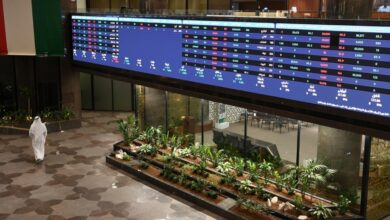Half the workforce missing as employees extend Eid break
The ministries complex was unusually quiet, with empty parking lots and little activity, as 32% of absences were classified as excused (regular periodic leave), while 23% remained under review.

• On Wednesday, some employees extended their Eidbreak by combining it with Thursday, leading to higher absenteeism through approved sick or casual leave.
On the first government workday after Ramadan and the Eid al-Fitr holiday, the ministries complex was unusually quiet, with nearly empty parking lots and minimal activity, Al Qabas newspaper reported.
On Wednesday some employees chose to extend their Eid holiday by combining it with Wednesday and Thursday as part of their job entitlement.
Employees’ conversations centered on the cold weather during Ramadan, the cost of chalets and resorts during Eid, popular travel destinations, high ticket prices, and crowded shopping malls.
Employee attendance rate
Officials estimated that employee attendance was at 50% but assured the newspaper that transactions were processed smoothly and without delays, partly due to the low number of visitors.
Officials explained that absenteeism tends to rise on such days, as employees take sick or casual leave—a right granted to them with prior approval from their superiors.
They noted that monitoring teams are in place to track unexcused absences in ministries and ensure accountability for negligent employees, particularly those who leave their offices after signing in.
Excused absences
Sources at the Ministry of Social Affairs revealed that 32% of absences were classified as excused (regular periodic leave), while 23% remain under review. These cases may later be reclassified as medical, emergency, or regular leave upon completion of the necessary regulatory procedures. For absences without valid justification, the applicable job regulations will be enforced.
Notably, ministry leaders, including undersecretaries and directors, arrived at their workplaces early. Field monitoring revealed varying attendance rates across departments, with some reporting high attendance while others recorded lower turnout.
In schools, teachers were present, but students were absent
Public school students across the country extended their Eid break on Wednesday, with most schools experiencing mass absences despite the commitment of teaching staff and warnings from school administrations.
Informed sources said that collective absences are often coordinated through WhatsApp groups, whether among parents, mothers, or advanced-level students. Some groups reportedly agreed on skipping school even before the Eid break began.
The sources noted that absent students were officially recorded in the student attendance system, prompting some parents to submit sick leave requests for their children. They emphasized that the recurring issue of mass absences requires further study and effective solutions.
One source highlighted that the fingerprint-based attendance system for school administrators and teachers has helped improve staff attendance.
Meanwhile, attendance rates at Kuwait University varied depending on course instructors. Some professors held their scheduled classes and required student attendance, while others canceled Wednesday’s lectures, leading to student absences.













